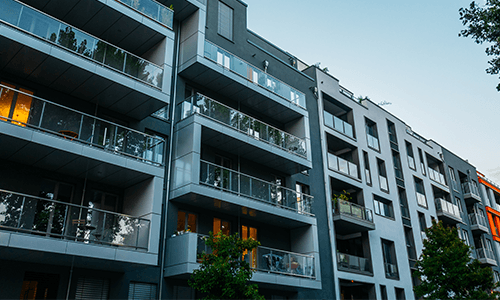con·ti·nu·i·ty
ˌkäntəˈn(y)o͞oədē/
noun
1. the unbroken and consistent existence or operation of something over a period of time.
The word continuity is often overused in homeowners associations. Board members and managers often use it as a means of defense against “off the wall” request in the same way that middle school teachers use “insubordination” as the catch all for unruly behavior.
When you stop and consider the reason behind the rule, there really is a value in keeping continuity in a community. In my travels to various condo & townhome buildings, I have seen a stark contrast in communities that value keeping the buildings “looking alike” verses those that take the “laissez faire” approach to exterior architectural modifications.
The challenge in this regard is evaluating homeowner’s individual expression, style, and preference with the good of the community at large. Sometimes these two spheres cannot coexist and the community value needs to oversee the individual value.
One of the secrets to limiting the amount of conflict between the individual owners and the association at large is to be clear in guidance regarding the exterior standards for the association. For instance, in regards to window and door replacement request it is helpful for the association to offer a clear specification for owners to follow.
If the current doors are entry doors with 9 lites and 2 panels below, provide some acceptable replacement models for homeowners to follow and also a place where they can purchase the door locally with a contractor who is familiar with the association’s guidelines. This will limit the amount of frustration for owners who go shopping and have their heart set on a front door with decorative glass.
Additionally, outside of white windows and doors, the exterior color can provide a significant problem in replacement request. Manufacturers often use the same name but have different shades of the same color. Inversely, manufactures also in many cases have different names for the same color. Specifying a product which does meet the needs of the community offers the guidance that the majority of homeowners are looking for such as “Marvin Ultimate Double Hung Windows with Evergreen Clad Exterior” instead of just saying to make sure the windows have a green exterior.
Not only is it important to be specific in the type of windows or doors that residents will install into their homes, but is also equally important to specify some guidelines for the installation method that will affect not only the final look of the product, but also the integrity of the building.
There are some instances when contractors can install a new window while leaving the original window frame in place, while in most cases this will result in a different look for the building. The glass will be smaller as well as the exterior aluminum trim being wider. In these cases, it will be difficult for the association to know the method of replacement that is planned unless the contractor is thorough and specific in the contract document.
The community can combat the installation variable issue by working with a reliable contractor or architect/engineer to specify the basic installation requirements such as requiring complete removal of the existing windows and frames in the document provided to owners. It may be beneficial to require the homeowner and contractor to sign off on receipt of the installation specifications and window/door specification to avoid confusion between the contractor and homeowner.
Lastly, it is important in the architectural process to require the certificate of insurance information from the contractors to avoid claims against the association. If the association is clear in insurance requirements through a specification for windows and doors, this will avoid the issue on the back end of approval when the insurance provisions of the contractor do not meet the association requirements and deposits have already been made by homeowners.
Essentially, if the homeowners associations become more proactive in providing clear guidance for homeowners in regards to the window and door replacement requirements, then they will be less likely to end up in a regrettable position of dispute with homeowners/contractors after work has been complete. Encouraging owners to work with reputable contractors providing reputable products will also encourage the quality assurance for the building and will also streamline the architectural approval process.
This will lead to “continuity” which is a key component in maintaining the “curb appeal” of an association and showing potential “owners” in the market that the association has order. Maintaining the curb appeal, encourages a sense of pride in ownership which also directly impacts the desirability of a given community and ultimately impacts home value. Start the process of developing a clear and concise specification for window and door replacement in your community today!




 CAI - Illinois Chapter
CAI - Illinois Chapter 



